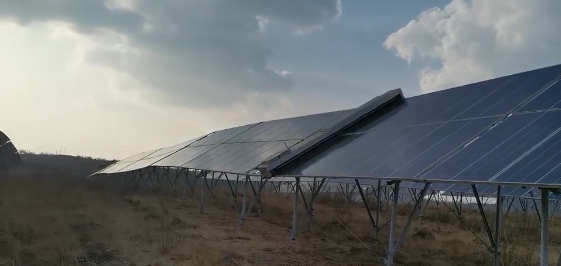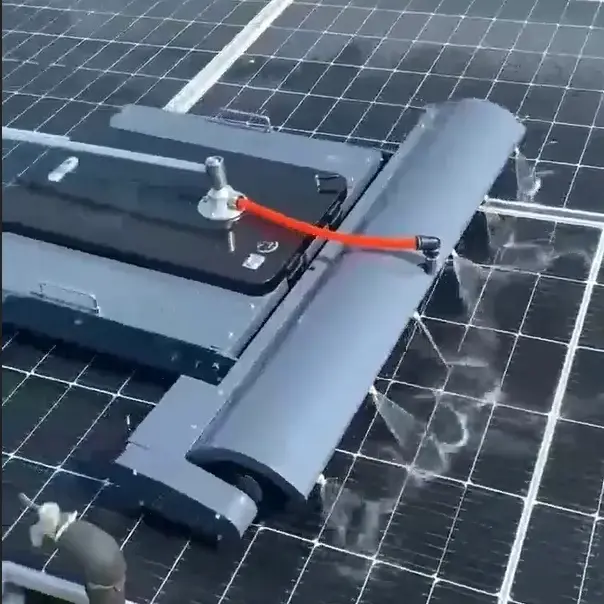Optimizing Solar Panel Cleaning: Balancing Efficiency, Cost, and Environmental Impact
As the renewable energy sector grows, the maintenance of solar panels becomes increasingly crucial. Proper cleaning of photovoltaic (PV) panels is essential to ensure optimal energy production. However, the methods used in cleaning can have significant implications for water usage, environmental impact, and overall efficiency. This article explores the various cleaning systems, highlighting their advantages and challenges, while recommending two viable products for solar panel maintenance.
Water Usage and Environmental Impact
Mechanical cleaning systems are widely used due to their cost-effectiveness and ease of maintenance. However, they can consume considerable amounts of water and cleaning agents. For instance, cleaning a 1 MW PV panel can require approximately 5 tons of water و 230 kg of cleaning agents per cycle. Annually, this adds up to around 15,000 tons of water و 690 tons of cleaning agents for a 200 MW PV station.
Moreover, wastewater can lead to soil and water pollution—especially critical in remote areas lacking efficient waste collection systems. The surfactants and additives in many cleaning agents pose risks to aquatic life, with long-term accumulation rendering land unusable for other purposes.
Cost and Efficiency
While mechanical cleaning is more budget-friendly, it may not achieve the same cleaning efficiency as advanced systems. While robotic cleaning systems provide higher cleaning efficiency, they come with higher initial costs. This makes them less accessible for smaller projects. Furthermore, the dynamic load from robotic systems can lead to microcracks in PV panels, reducing their lifespan and efficiency.
Recommended Product: آلة تنظيف الألواح الشمسية الأوتوماتيكية
- Cleaning Method: Dry Sweep (customizable for water sweeping)
- Best Suited For: Large power station maintenance, particularly in deserts, urban areas, and regions with high pollution levels.
This machine offers an innovative solution by using a dry sweeping method, significantly reducing water consumption while maintaining the effectiveness of cleaning.

Operational Limitations
Manual cleaning, while thorough, is labor-intensive and involves safety risks. Automated systems, while revolutionary, can face challenges such as getting stuck on uneven or sloped surfaces, particularly in rooftop installations. The efficacy of dry cleaning methods may also falter in areas where dust has sticky or intricate compositions.
Recommended Product: Remote Control روبوت غسيل الألواح الشمسية
- Cleaning Method: Water Washing, Dry Cleaning
- Operation Mode: شبه أوتوماتيكي
These robots are commonly used in cleaning companies due to their transportability and ease of operation. They provide a balance between manual and automated cleaning, making them versatile for various installations.
Technological Challenges
The complexity of robotic systems necessitates a robust control and communication infrastructure, which can be costly and challenging to maintain. Integrating features like remote monitoring can enhance efficiency but may not be feasible for all installations.
Energy Consumption
Automated systems often consume significant energy, which can negate some benefits of using renewable energy for their operation. Optimizing energy consumption through efficient programming and smart technologies, such as PLCs, is vital for sustainability.
Maintenance and Reliability
Even low-maintenance cleaning systems require regular checks. Environmental factors like temperature and humidity can affect sensor performance, leading to less effective cleaning over time.
Initial Investment and Return on Investment (ROI)
While advanced cleaning systems promise long-term savings and efficiency, their initial costs can be a significant barrier for smaller projects. The ROI may take time to materialize, especially in varying environmental conditions.
خاتمة
Choosing the right solar panel cleaning system is critical for maximizing efficiency while minimizing water usage and environmental impact. The آلة تنظيف الألواح الشمسية الأوتوماتيكية و روبوتات تنظيف الألواح الشمسية التي يتم التحكم فيها عن بعد are two excellent options that cater to different needs, ensuring optimal maintenance of PV panels across diverse settings.
By prioritizing sustainability and investing in efficient cleaning solutions, we can protect our environment while harnessing the full potential of solar energy.
